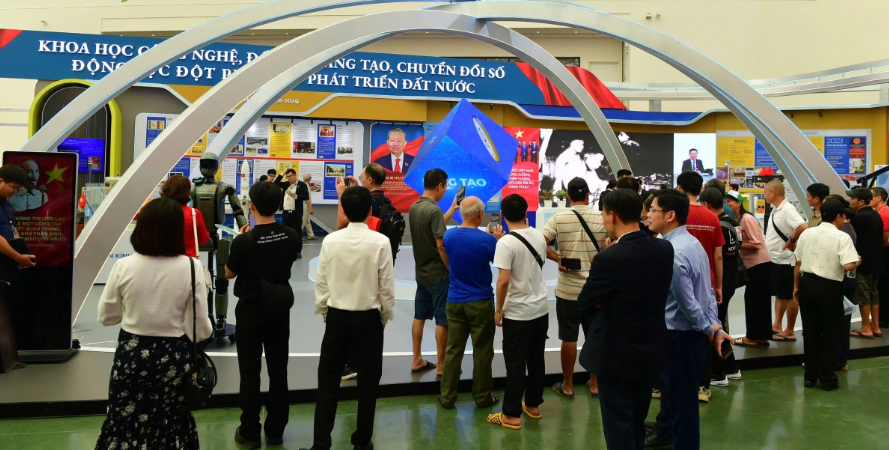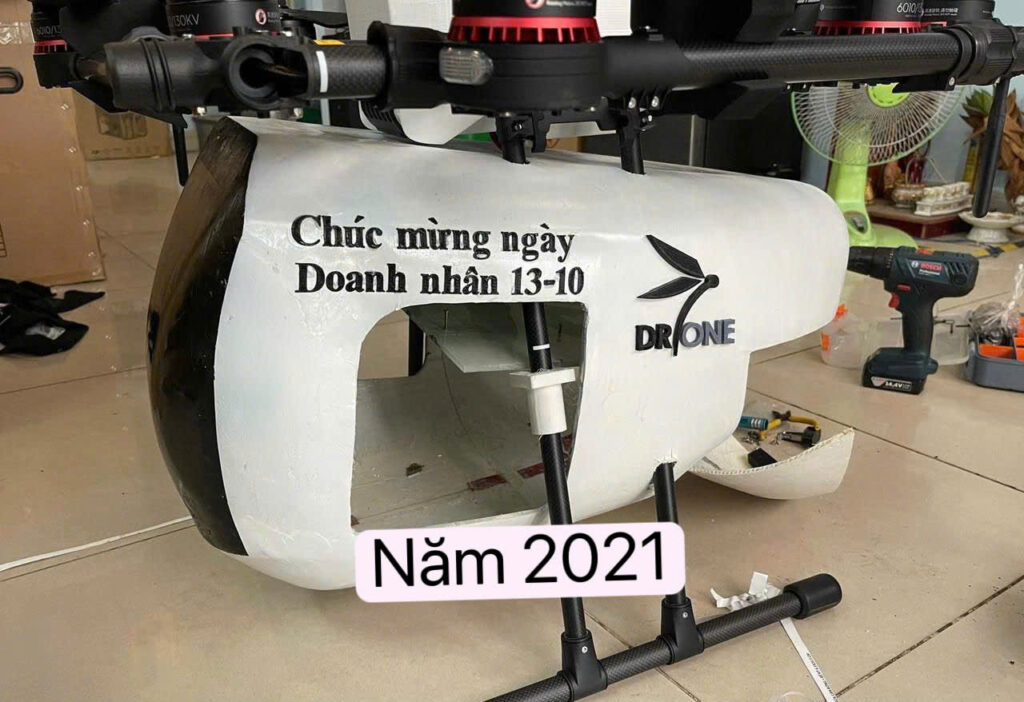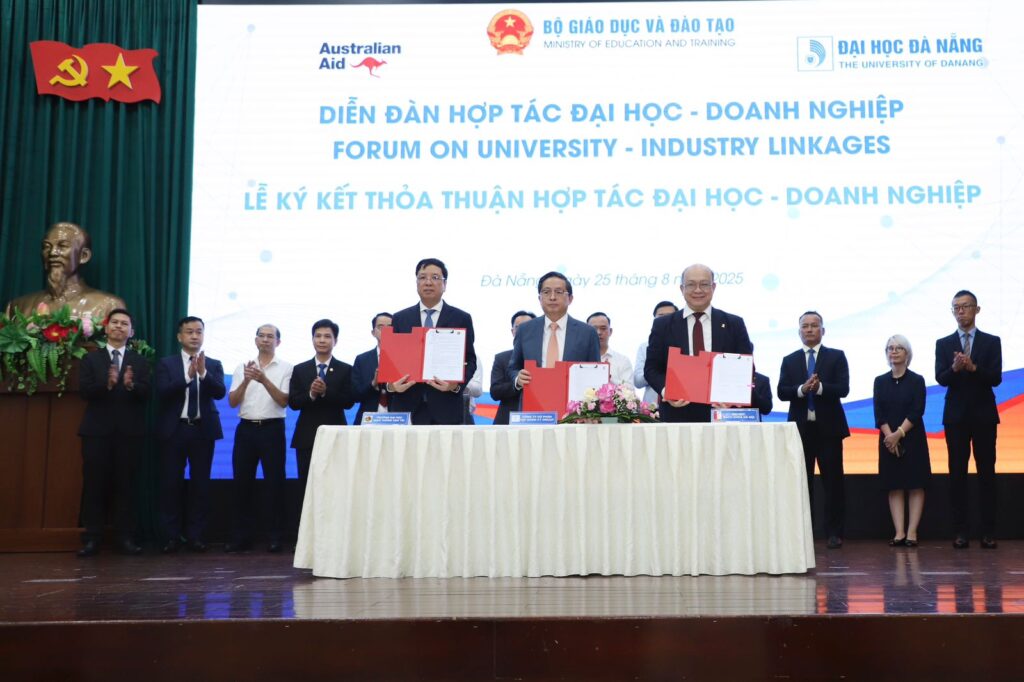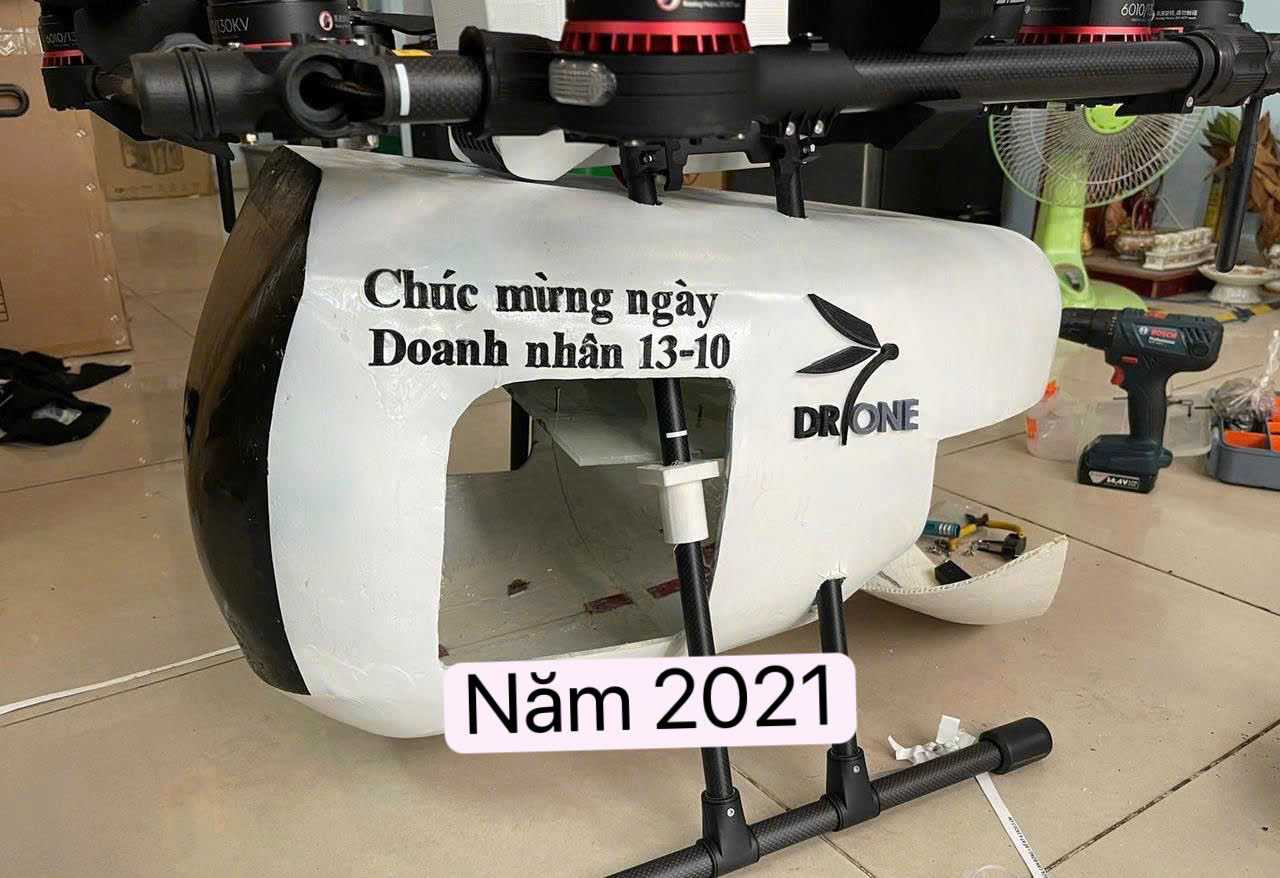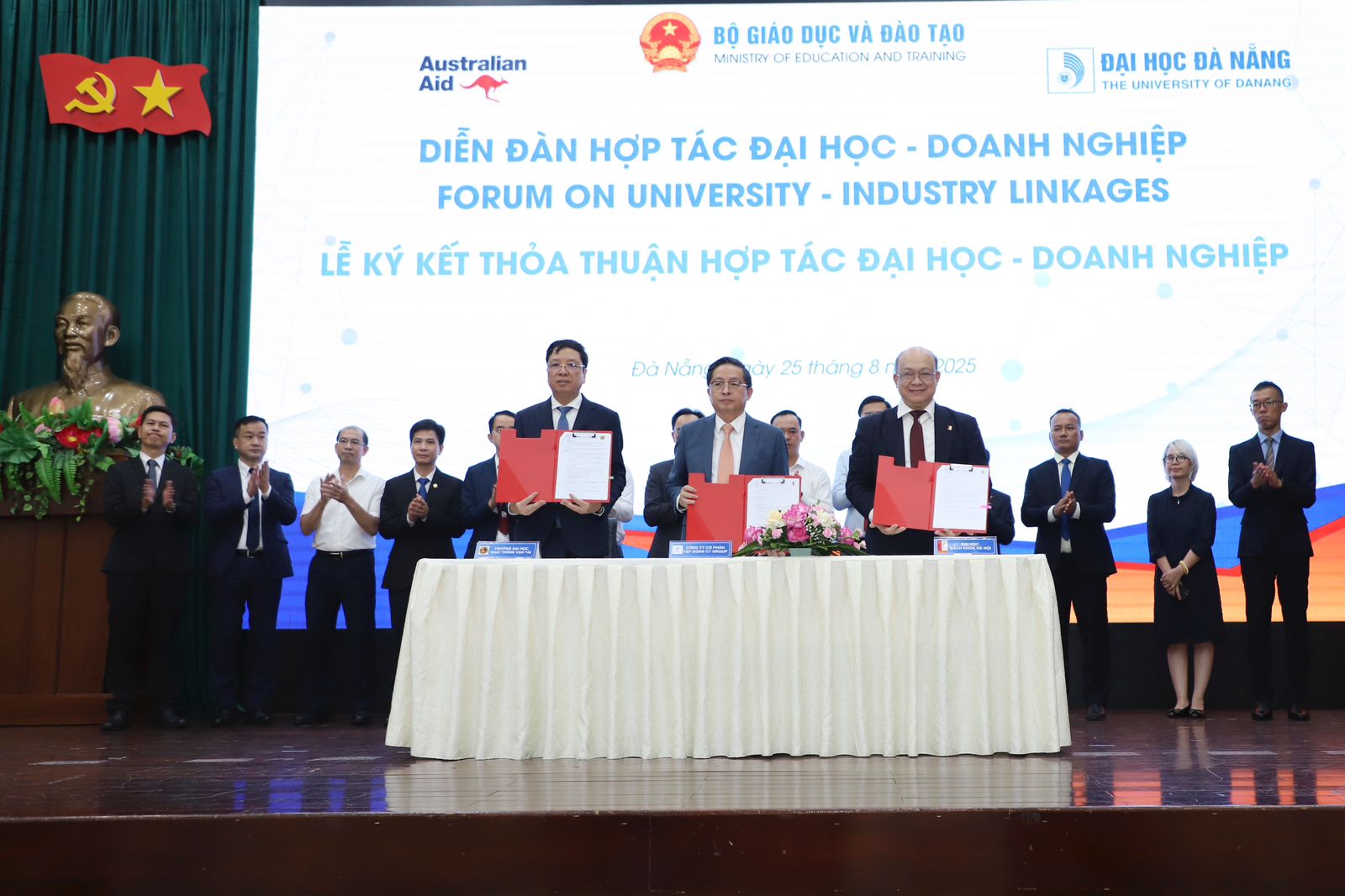After a decade of research and investment in science and technology, CT Group is gradually revealing its ambition to dominate the low-altitude space economy.
Following an agreement to export 5,000 UAVs and 100 million semiconductor chips to South Korea, CT Group recently partnered with the Indonesian government to develop low-altitude space economy policies and support digital transformation. These are the first two milestones in the field of science and technology for a corporation that has long been better known for real estate, commerce, and manufacturing.
TheLEADER had an exchange with Mr. Tran Kim Chung, Chairman of CT Group, about the silent decade-long “expansion” into the field of science and technology and the aspiration to bring Vietnamese technology products to the world.
Seizing Opportunities
CT Group is better known in the real estate sector, but it remains relatively unfamiliar in the field of science and technology. When did the company begin expanding into this sector, and what are the key products the Group is focusing on?
Mr. Tran Kim Chung: CT Group celebrated its 30th anniversary in 2022, and prior to that, we spent a lot of time and effort to redefine our 30-year development strategy for the second time. At the anniversary event, CT Group announced its second 30-year plan, in which we are focusing on nine core technology sectors: Semiconductor Technology, Artificial Intelligence (AI), Unmanned Aerial Vehicle (UAV) Technology, Green Cryptocurrency, ESG Technology, Electric Vehicles and Electric Trains, Quantum Technology, New Energy Technology, Gene & Cell Technology.
The ultimate goal of pursuing science and technology is to create products, which is different from the consumer goods sector. With consumer goods, advertising immediately brings the products and results to the public and the market. In contrast, science and technology require much more time and resources, which is why CT Group has been working quietly in this field.
Each time we made progress, we encouraged ourselves to move forward, so not many people were aware that CT Group is involved in as many as nine technology sectors. It is only now, when some of our products have been successfully exported, that more people and the market have come to know about it — otherwise, very few would have noticed.
What are the reasons for CT Group’s shift to the science and technology sector, a completely new field for the company?
Mr. Tran Kim Chung: Before the Covid-19 pandemic, when speaking and giving lectures at universities, I urged students to study “like crazy,” research “like crazy,” I told them not to spend too much time chasing milk tea or coffee trends, but instead to devote their time to science and technology.
Because this 4.0 revolution is completely different from the previous three revolutions, as it will change humanity forever. Any countries, nations, or individuals that don’t keep up will be left behind and become completely dependent on other nations. CT Group has quietly called on and shown students that our country is at a starting point with many opportunities to rise or risk falling behind forever.
That is my concern, my dedication, and the passion that CT Group wants students to feel and understand the meaning of the 4.0 revolution and how many opportunities it brings.
And that’s also why CT Group has been quietly researching the field of science and technology, not only with the desire to seize business development opportunities but also to contribute to the country’s development.
Exporting Vietnamese Technology Products to the World
CT Group recently made a strong impression by signing, within a very short time, an agreement to export 5,000 UAVs to South Korea and a memorandum of understanding (MOU) with the Indonesian government on cooperation in low-altitude economic development and digital transformation. Could you elaborate more on these deals? After this information was made public, many people expressed skepticism. How would you respond to that?
Mr. Tran Kim Chung: Regarding the contract to export 5,000 UAVs to South Korea that CT Group signed with Airbility, I believe it will be very feasible. Airbility is a company with strong engineering capabilities, boasting a team of experts from Hyundai Motor Company, the Korea Advanced Institute of Science and Technology (KAIST), the Massachusetts Institute of Technology (MIT), Carnegie Mellon University, the Korean Agency for Defense Development, and more. The company has received investments from numerous investment funds and government sponsorship programs in South Korea. Airbility found good production capacity, complete facilities, and great R&D potential in CT UAV.
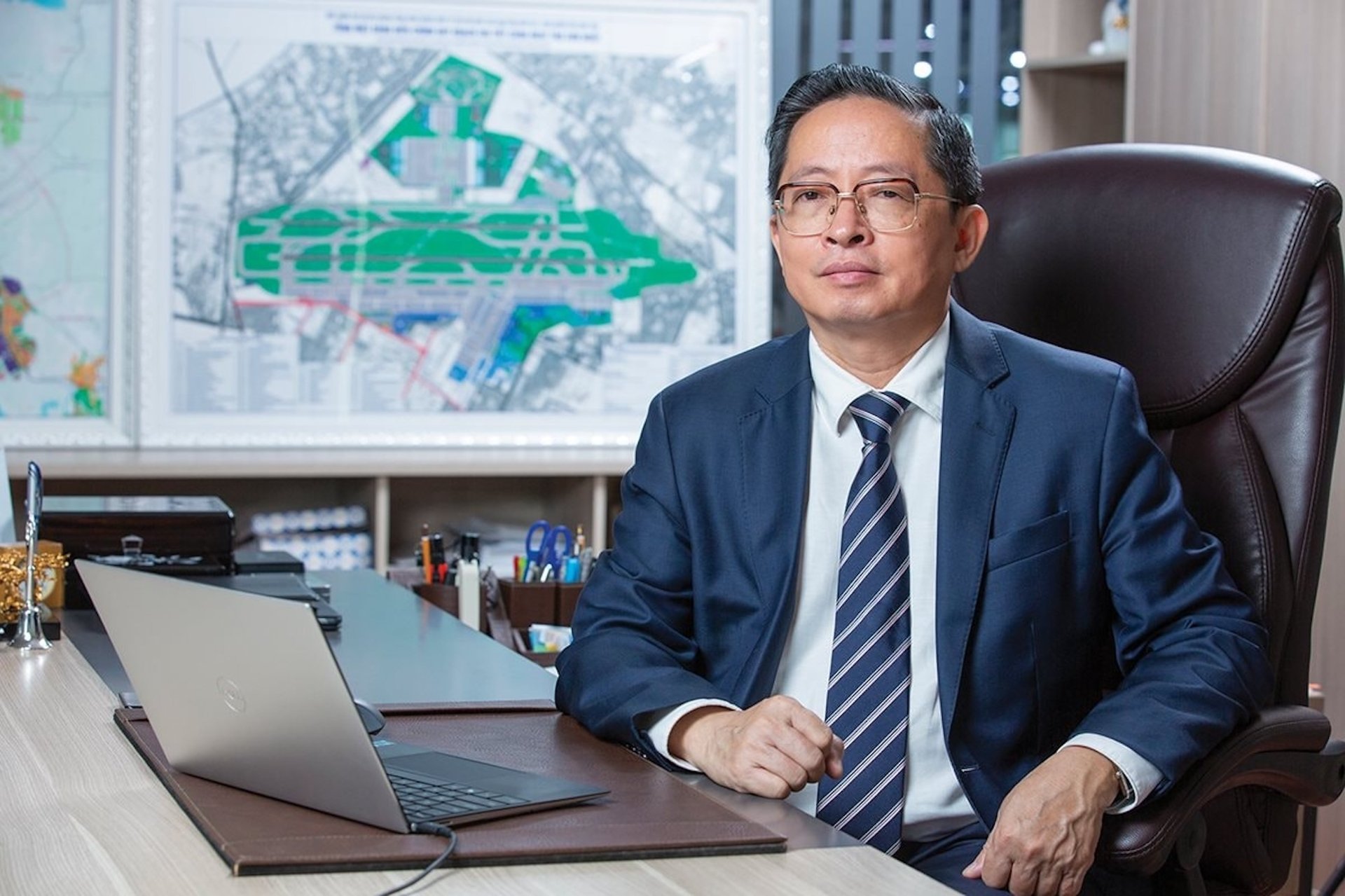
Mr. Tran Kim Chung, Chairman of CT Group
CT UAV currently has a network of laboratories both in Vietnam and abroad, enabling them to turn ideas and designs into reality in the shortest possible time. These are the factors that brought the two sides together.
Most of Airbility’s products are highly sophisticated and technologically demanding. The two sides have been working together in considerable detail, and at present we are about 50% of the way through. After finalizing the technical elements, we will move to the production implementation phase. For high-tech products like these, delivery normally takes between 6 to 9 months depending on the level of complexity. We expect to deliver the full order in 2026, provided that they finalize the prototype soon.
In addition, CT Group signed a memorandum of understanding with Indonesia’s Ministry of National Development Planning (Bappenas) to develop policies and an ecosystem for the low-altitude economy, supporting the country’s digital transformation. Indonesia, which aspires to become one of the world’s top five economies, has chosen CT Group as its partner in this rapidly emerging field known as the Low Altitude Economy (LAE).
The Low Altitude Economy (LAE) is an entirely new economy built on cutting-edge technologies and is now booming in advanced countries. For example, in China the LAE market was valued at only USD 65 billion in 2023, but it is projected to reach USD 550 billion by 2025. LAE is a multi-layered economic structure within the airspace below 3,000 meters, essentially a projection of all ground-based industries into the sky, operating at much higher productivity. It is powered by technological advances such as unmanned aerial vehicles (UAVs), artificial intelligence, big data and the Internet of Things, aerostats, space stations, and integrated airspace management systems for monitoring, operations, and services.
The Indonesian government established the Low-Altitude Economy Committee in 2024, appointing high-ranking officials to lead it and to seek technical cooperation from China and several other countries. Indonesia has also allocated an enormous budget of up to USD 900 billion for science and technology, innovation, and digital transformation.
While the agreement with South Korea was signed with a private enterprise, the one with Indonesia was made directly with the government.
When the information was released, some people questioned CT Group’s capabilities. This is understandable, as it is the first time a Vietnamese company has successfully exported unmanned aerial vehicles to the international market and collaborated with another country to research the low-altitude economy. People may not be familiar with it yet, but once the first orders are delivered or the research results are applied in real life, such doubts will naturally disappear.
Skepticism itself is the driving force of science and technology — only through questioning can we push forward with exploration and development. So I believe that when people express doubts, it is normal and understandable.
In fact, we have received thousands of messages and words of encouragement that we deeply value. We never expected so many people to take such an interest. Reading those messages brings us great joy, because working in technology is incredibly challenging. Over the past 10 years, we have poured in not only sweat but also tears. Yet when we read the encouragement from the community, especially from fellow technologists, it truly motivates us.
It seems that the deal to export 5,000 UAVs to South Korea has drawn more attention. So when did CT Group begin its research and development in the UAV sector? How many engineers does the Group currently have, how much has been invested, and what results have been achieved so far?
Mr. Tran Kim Chung: Few people know that CT Group began researching UAVs as early as 2016, but it was not until 2020 that we partnered with the largest agricultural drone company in Vietnam at that time. Together, we established a company called Dr One. The name Dr One carries the meaning of “Number One Doctor,” but when written as a single word, it reads as “Drone” – symbolizing Vietnam’s first scientific dream in this field.
However, this “Number One Doctor” had to face many hardships, not only the pandemic but also a strange sense of loneliness when no one understood or supported us. While CT Group chose to dive into research and development (R&D) – a costly and risky path – other shareholders of the joint venture believed it would be easier and more profitable to focus on distribution. Economic crises, internal conflicts, and the Covid-19 pandemic eventually weakened Dr One, forcing us to let it go and “end its life” as a way of release.
Undeterred, the research team shifted its focus to military and industrial UAVs, choosing the Middle East as the launch market through a partnership with another Vietnamese company. Both sides agreed to pursue the path of research and development. This new partner is one of Vietnam’s leading companies in military and industrial UAV development. CT Group repeatedly funded this joint team to push aggressively into the Middle Eastern market throughout 2022 and 2023, and eventually their products were showcased before the commander of an Arab nation.
Then, in 2023, the team established the company CT AirUAV. This time, luck still didn’t smile on CT AirUAV. The team consistently failed in their Middle Eastern campaigns, a fickle market that changed its mind at will… the harder they tried, the weaker they became, as their research speed couldn’t keep up with market demand. The sweat and capital quickly disappeared under the hot desert sand. This failure caused even “the most loyal fans” to turn against the UAV group.
At the most difficult moment, CT Group’s leadership made a bold and decisive choice: giving up was not an option, and the hard-earned lessons could not be wasted. The team had drawn a profound lesson — that mastering the core UAV technologies and ensuring research moved faster than market shifts was essential. Everyone “gritted their teeth” and pressed forward for the third time, rebranding and redefining themselves under the new name: CT UAV.
Step by step, through resilience and relentless learning, CT UAV rose again — walking, then moving faster, and eventually running ahead with ever-increasing momentum in 2024 and 2025. Today, it has become one of the fastest R&D players in the market, creating a distinct competitive edge. Now, CT UAV is calling on teammates from across the globe to join in realizing a bold dream: exporting Vietnamese UAVs to the world.
Another factor that helps UAV CT go fast is that we have acquired six core technologies to form the UAV. This means that any unit wanting to produce UAVs must master these six core technologies, including: electronic circuit design and manufacturing; composite technology for molding aircraft bodies; flight control systems; telecommunications technology for signal and image transmission; gimbal stabilization technology; and, finally, battery technology.
Specifically, CT Group has the capability to design chips, which is something few UAV companies in the world can do. We also have a company specializing in AI, which forms an ecosystem of complementary technology areas.
To achieve today’s results, we went through two or three major failures with UAVs over the past 10 years.
Besides UAVs, what other products does CT Group export?
Mr. Tran Kim Chung: In the UAV sector, we already have 10 major orders from various countries. However, these orders are still in the product development and manufacturing stage.
Beyond UAVs, we also have other products. For instance, CT Group currently has 20 clients in the semiconductor field, even though our plant is only now in the final stage of equipment installation.
Another sector we aim to export globally is digital twins. This is also a highly advanced technology product, and we have already completed the R&D and are ready for export.
Robot home and zero-emission robot stacking home products are also ready for export.. These are prefabricated in factories and equipped with mechanisms that allow them to fold into compact form for container transport. Once delivered overseas, you simply expand it, press a button, and it unfolds into a fully furnished, livable home.
Mastering Manufacturing Technology
One of the key questions many people are interested in is: To what extent has CT Group mastered the manufacturing technologies for UAVs, semiconductors, and its other products?
Mr. Tran Kim Chung: CT Group currently has 16 main product lines, primarily serving economic activities.
For UAVs, we have mastered about 85–90% of the technology. The only part we have not focused much on is battery cells, since this technology is evolving very rapidly and we have not invested in it yet. Moreover, purchasing battery cells for assembling batteries is not particularly difficult.
In semiconductors, in June 2025 CT Group announced its ADC chip. This chip was 100% designed by CT Group, without acquiring any foreign IP. It is now in the photolithography stage and is expected to be available on the market early next year. The ADC chip is used for sensors, converting signals from analog to digital and vice versa.
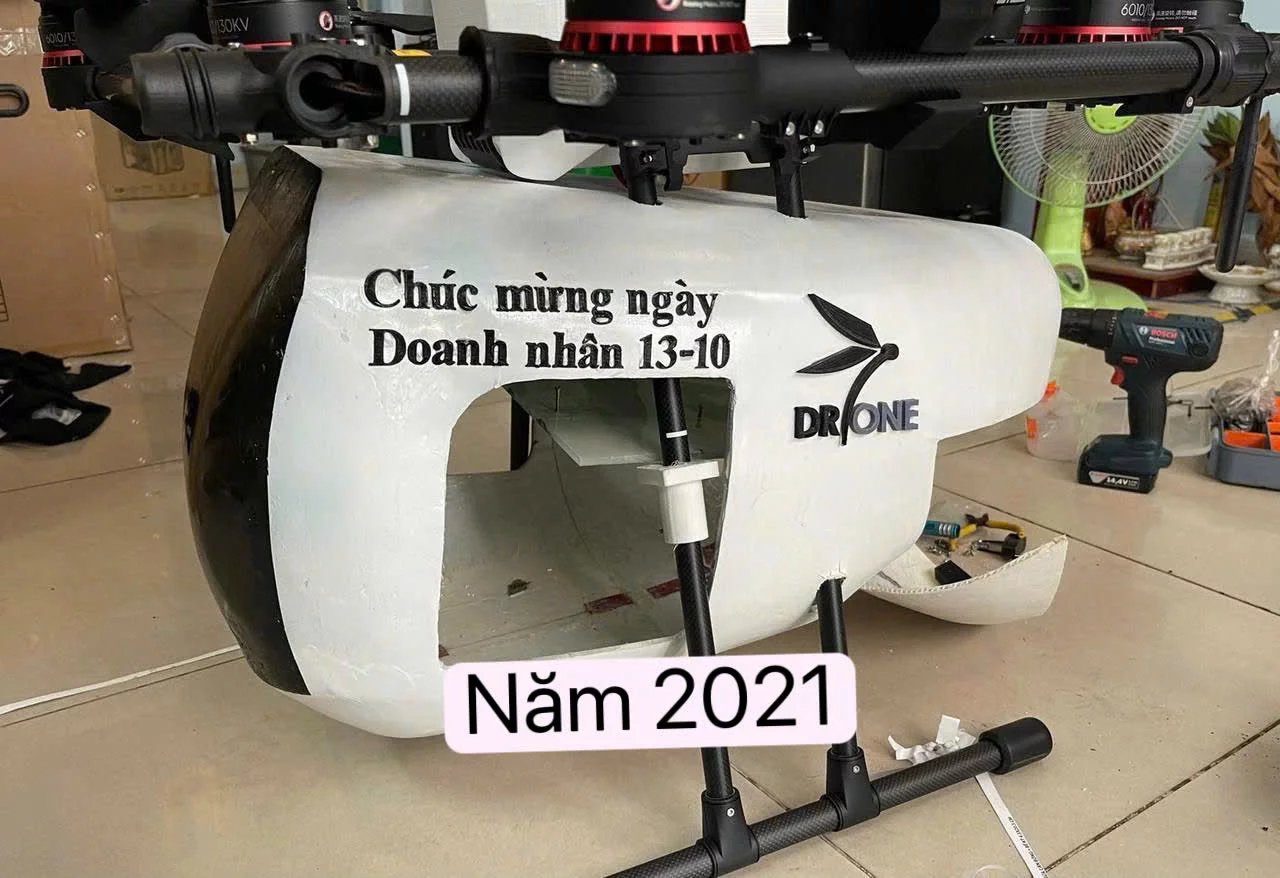
UAVs are researched by Dr One, a company established by CT Group
We are also developing the RISC-V MCU chip, which is expected to be completed this year. The S-AI chip that CT Group is working on is scheduled for completion next year. In addition, from now until the end of 2026, CT Group will also develop the PA chip, a high-value chip specifically designed for UAVs.
While CT Group has already achieved strong capabilities in production technology, how is the progress in developing and building manufacturing plants?
Mr. Trần Kim Chung: CT Group is currently developing a 343-hectare science park in Bình Chánh and a manufacturing plant in Tây Ninh. In addition, the Group will build a Space Center near Tân Sơn Nhất Airport, covering about 500,000 square meters. The center is expected to house around ten thousand engineers working on research and experiments in space-related technologies.
Recently, the Prime Minister had a direct working session with CT Group. At that meeting, what proposals did the company present, and how did the Government respond?
Mr. Trần Kim Chung: In developing 11 core technology sectors in Vietnam, CT Group is among the few enterprises with a truly comprehensive ecosystem. Therefore, we want to contribute ideas that can drive significant changes for the economy as well as in science, technology, and innovation, in line with the spirit of Resolution 57.
For example, regarding regulatory frameworks: in the past, the Ministry of Defense did not have the technical tools to manage UAVs, so management was primarily administrative—through documents and bans. But bans only apply domestically; they cannot stop malicious actors. To effectively deal with them, we need technical tools that can actually block such threats.
Therefore, I proposed working with the Ministry of National Defense and the Ministry of Public Security to set up an interagency task force that can review and resolve outdated regulations which are still causing bottlenecks. This will allow us to move forward without wasting the valuable resource of airspace. Vietnam has the potential to build a vast low-altitude space economy, or what we call the marginal space economy.
This is an economy with great potential, bringing significant growth. For example, in China, where their low-Earth orbit economy is growing well, it was only $65 billion in 2023 but is expected to increase to nearly $500 billion by 2025. With such great potential, if we don’t remove the institutional regulations, we won’t be able to exploit and develop it, leading to waste.
CT Group has proposed introducing an identification SIM for UAVs.
Through this SIM, regulatory agencies would be able to determine which areas are authorized for flight and which are restricted. At the same time, it could also serve as a tool for the government to collect annual registration fees. This is one of CT Group’s proposals to replace administrative directives with technical solutions for UAV management.
Secondly, CT Group has proposed support for enterprises in developing infrastructure. For example, we are currently building a factory in Tây Ninh and hope to receive assistance in expediting legal procedures.
In terms of finance, we hope to gain access to funding sources dedicated to science, technology, and innovation. Currently, the Government has established a VND 500 trillion package and banks have already registered, but there are still no specific guidelines for disbursement. We hope that the relevant authorities will soon issue clear instructions so that not only CT Group, but also many other enterprises engaged in science and technology, can have access to these resources.


